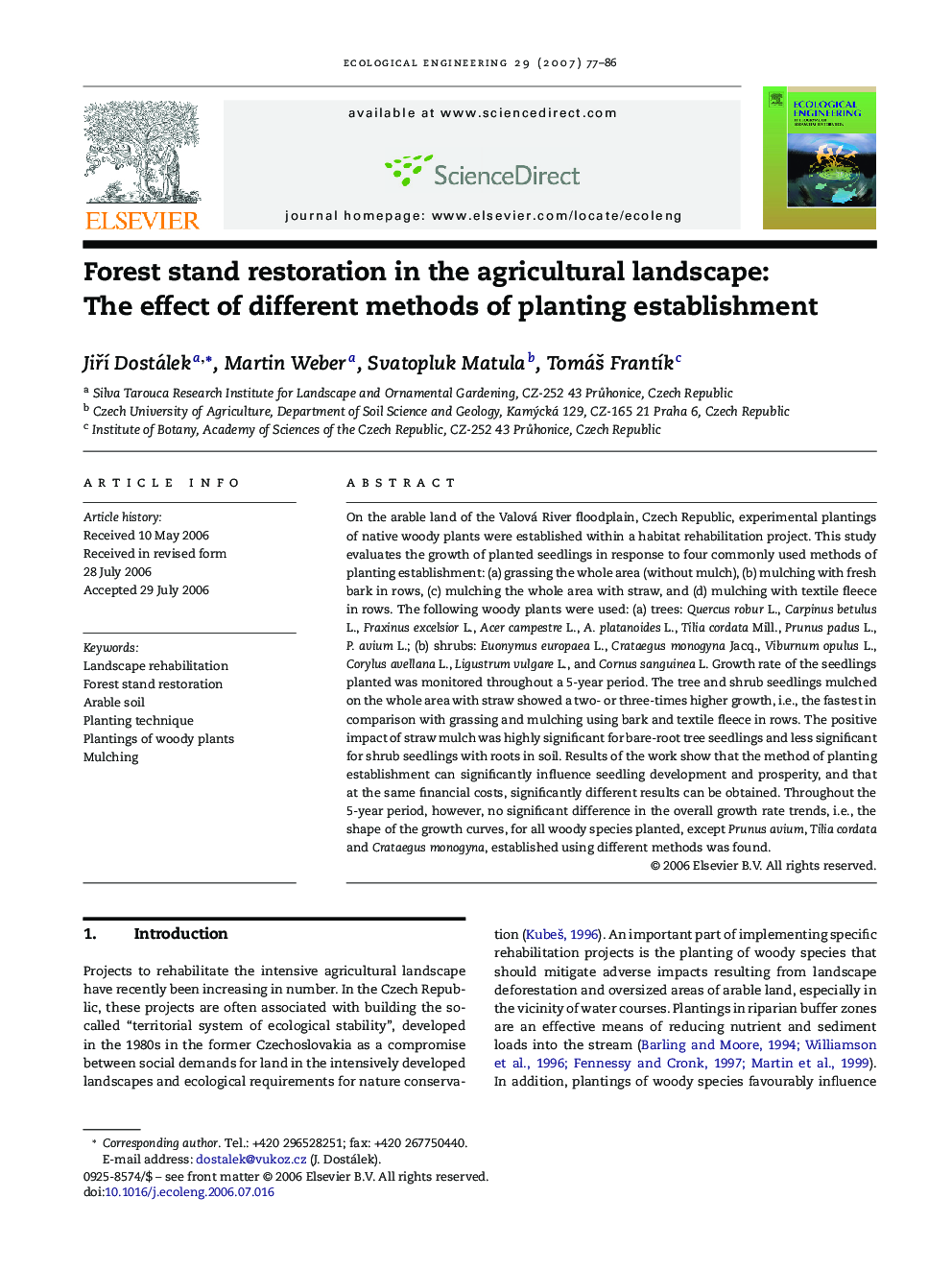| Article ID | Journal | Published Year | Pages | File Type |
|---|---|---|---|---|
| 4391192 | Ecological Engineering | 2007 | 10 Pages |
Abstract
On the arable land of the Valová River floodplain, Czech Republic, experimental plantings of native woody plants were established within a habitat rehabilitation project. This study evaluates the growth of planted seedlings in response to four commonly used methods of planting establishment: (a) grassing the whole area (without mulch), (b) mulching with fresh bark in rows, (c) mulching the whole area with straw, and (d) mulching with textile fleece in rows. The following woody plants were used: (a) trees: Quercus robur L., Carpinus betulus L., Fraxinus excelsior L., Acer campestre L., A. platanoides L., Tilia cordata Mill., Prunus padus L., P. avium L.; (b) shrubs: Euonymus europaea L., Crataegus monogyna Jacq., Viburnum opulus L., Corylus avellana L., Ligustrum vulgare L., and Cornus sanguinea L. Growth rate of the seedlings planted was monitored throughout a 5-year period. The tree and shrub seedlings mulched on the whole area with straw showed a two- or three-times higher growth, i.e., the fastest in comparison with grassing and mulching using bark and textile fleece in rows. The positive impact of straw mulch was highly significant for bare-root tree seedlings and less significant for shrub seedlings with roots in soil. Results of the work show that the method of planting establishment can significantly influence seedling development and prosperity, and that at the same financial costs, significantly different results can be obtained. Throughout the 5-year period, however, no significant difference in the overall growth rate trends, i.e., the shape of the growth curves, for all woody species planted, except Prunus avium, Tilia cordata and Crataegus monogyna, established using different methods was found.
Keywords
Related Topics
Life Sciences
Agricultural and Biological Sciences
Ecology, Evolution, Behavior and Systematics
Authors
JiÅà Dostálek, Martin Weber, Svatopluk Matula, TomáÅ¡ FrantÃk,
